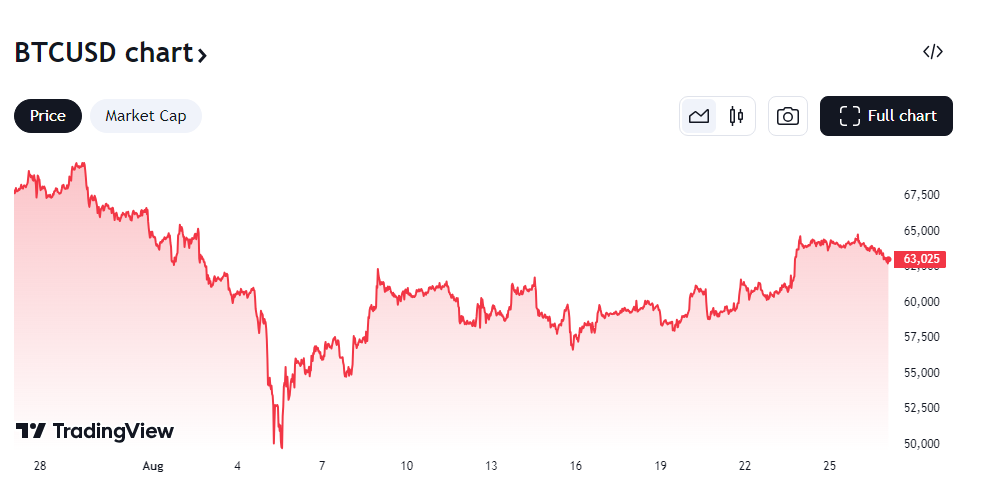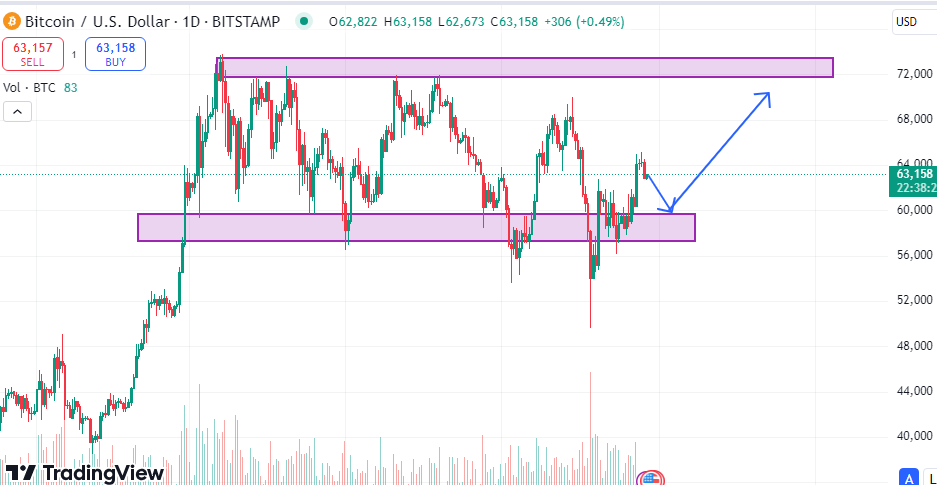Bitcoin’s Next Big Move: Massive Inflows Hint at Major Price Surge
Introduction
Bitcoin, the number one cryptocurrency by market cap, has been the subject of intense controversy, speculation, and scrutiny. Over the years, its value has skyrocketed and crashed, experiencing a range of fluctuations that have captured the attention of investors worldwide. However, amidst this volatility, certain indicators often emerge, suggesting potential future trends for the market. The latest influx of capital into Bitcoin, possibly driven by institutional investors shrugging off price suppression, indicates a bullish divergence. This article will review recent developments in Bitcoin, analyze these inflows, and explore possible scenarios for the digital asset.
The Status Quo: Where is Bitcoin?
2024 has been a challenging year for Bitcoin. The early parts of 2023 saw relatively stable trading until fluctuations began, influenced by macroeconomic data, legal developments, and market sentiment. By August 2024, Bitcoin was trading at around $49,000, a significant drop from its all-time high of nearly $69,000 in November 2021.

Price Volatility: Many mistakenly view Bitcoin as a “store of value,” but its price action resembles that of a high-risk speculative asset. This volatility will likely continue making headlines in 2024, with fluctuations that could result in significant gains or losses within days or even hours.
Institutional Interest: Historically, retail investors have driven Bitcoin demand, but institutional interest has increased significantly in recent years. In 2024, major financial institutions, hedge funds, and even governments have shown interest in Bitcoin, considering it a hedge against inflation or currency debasement.
Regulatory Landscape: Regulation is a double-edged sword for Bitcoin. While clear, supportive frameworks can legitimize the market and attract larger players, stringent regulations can stifle innovation and deter investors. In 2024, some regions have embraced Bitcoin regulation, while others have imposed stricter controls.
Capital Inflow: A Closer Look
The recent inflow of capital into Bitcoin is not just a random event but a significant development that warrants closer examination. What does this capital influx represent, and how might it impact Bitcoin’s price action and market dynamics?
Institutional Flows: A substantial portion of the capital inflow comes from institutional investors, such as hedge funds and corporate treasuries. These players typically have longer investment horizons and deeper capital reserves, providing a stabilizing influence on Bitcoin’s price.
Exchange Inflows and Outflows: The movement of Bitcoin to and from exchanges is another critical metric. Large inflows to exchanges often signal selling pressure, potentially causing price declines. Conversely, significant outflows indicate long-term holding, suggesting bullish sentiment.
Stablecoin Inflows: The inflow of stablecoins like USDT and USDC into exchanges is another indicator. Large transfers of stablecoins can signal that investors are preparing for a buying spree in cryptocurrencies like Bitcoin, potentially heralding a bull market.
What Might Be Driving the Inflow?
Understanding the factors behind recent capital inflows into Bitcoin is crucial for predicting future movements.
Macroeconomic Uncertainty: The global economic landscape of 2024 is fraught with uncertainty, including skyrocketing inflation, geopolitical tensions, and challenges with traditional financial tools. Bitcoin, with its decentralized nature and supply limit, is seen as a hedge against inflation and financial instability.
Central Bank Policies: Central banks worldwide have adopted varying monetary policies to address economic challenges. Some have raised interest rates to combat inflation, while others have pursued quantitative easing. These policies can influence Bitcoin’s attractiveness as an investment.
Adoption and Innovation: The ongoing adoption of Bitcoin by companies, institutions, and even some governments has fueled recent capital inflows. Innovations like the Lightning Network, which reduces transaction fees, make Bitcoin more accessible, driving further adoption.
Regulatory Clarity: Clear regulatory frameworks can boost investor confidence. The approval of Bitcoin ETFs in several jurisdictions has made it easier for institutional investors to engage with digital assets, attracting more capital to the market.
Implications for Bitcoin Moving Forward
The massive capital inflow into Bitcoin may signal significant future movement. However, analysts remain divided on the direction.
Bullish Case: Many analysts see the recent capital influx as a bullish indicator, given the growing adoption of Bitcoin and technological advancements. Some believe Bitcoin could retest its all-time high of $69,000 if market conditions remain favorable.
Bearish Case: On the other hand, some analysts warn of potential market corrections if Bitcoin fails to break through key resistance levels. Regulatory risks and macroeconomic uncertainties could further pressure Bitcoin in the near to medium term.

Strategies for Investors
In this volatile market, investors can adopt various strategies to navigate Bitcoin’s price swings.
Dollar-Cost Averaging (DCA): This strategy involves investing a fixed amount of capital over time, regardless of Bitcoin’s price, to mitigate the impact of volatility and avoid trying to time the market.
HODLing: Long-term believers in Bitcoin might opt for a buy-and-hold strategy, requiring patience and confidence in Bitcoin’s future value.
Technical Analysis: Active traders can use technical analysis to identify entry and exit points, relying on price charts and market indicators to make informed decisions.
Hedging Strategies: To protect against losses, investors can use options, futures, or other derivative instruments to hedge their investments, providing a safeguard against market volatility.
Conclusion: What to Watch For
The recent capital inflow into Bitcoin is a significant development, but its impact remains uncertain. Investors should closely monitor key indicators, such as institutional inflows, exchange activity, stablecoin movements, and macroeconomic events, to gauge Bitcoin’s future direction.
Bitcoin’s future remains unpredictable, but it continues to be a focal point for investors, analysts, and enthusiasts. Staying informed and adapting to market dynamics will be crucial for navigating the next big Bitcoin move.


